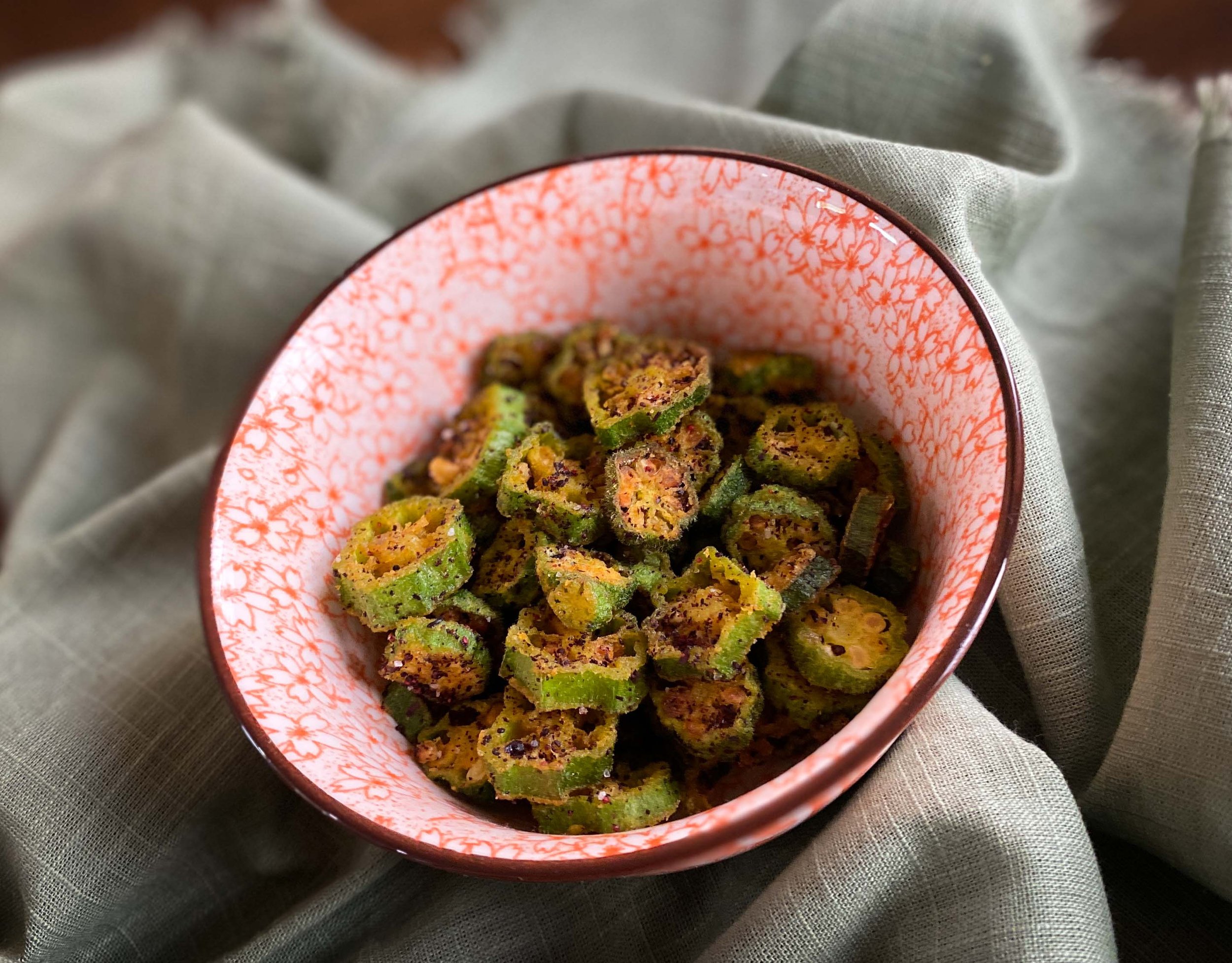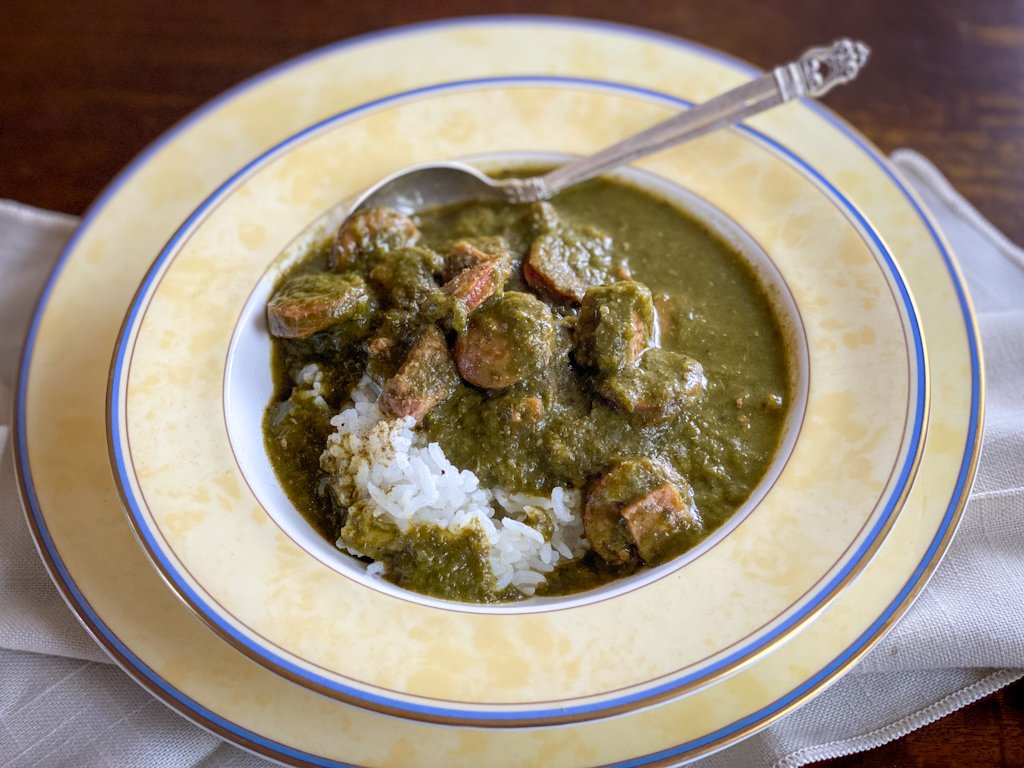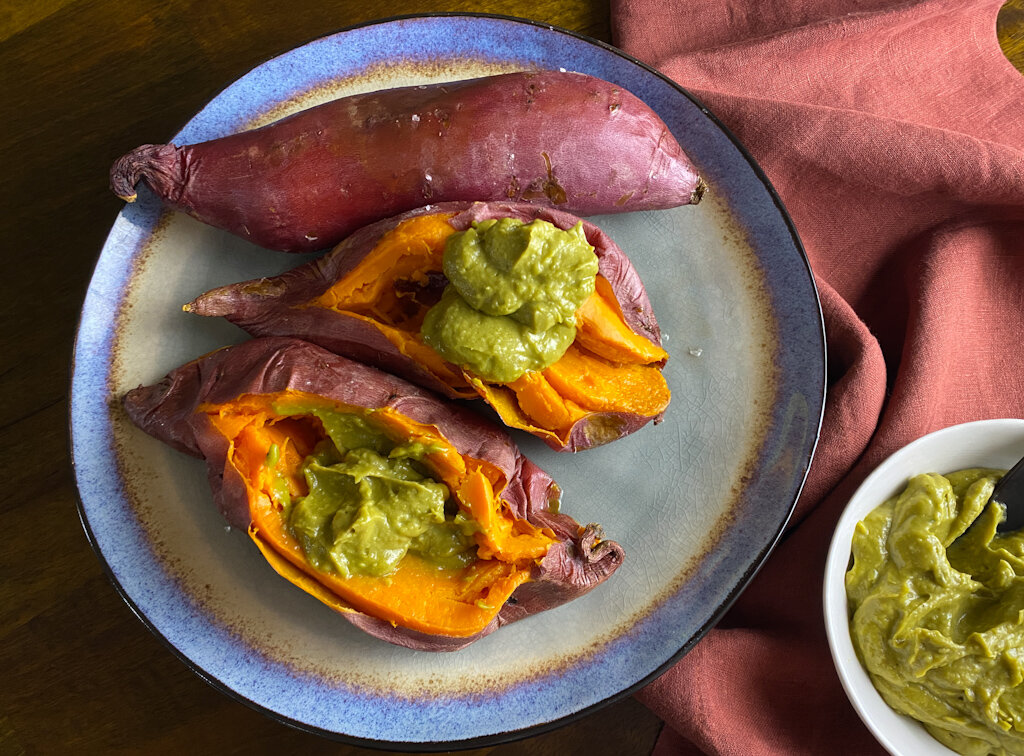By Chloé Landrieu-Murphy
Unless you’re from Southern Louisiana, there’s a good chance you’ve never heard of gumbo z’herbes — an essential dish across the region, particularly for those who abstain from meat on Fridays during Lent.
Often referred to as “the queen of all gumbos,” its name is a Creole dialect contraction for gumbo aux herbes, meaning “gumbo of greens.” (It’s also known as “green gumbo.”) Earthy, delicious and comforting, it is built like other gumbos, but it also includes an entire garden’s worth of leafy greens.
Though traditional Lenten preparations of the dish don’t include meat, part of the appeal of gumbo z’herbes is the flexibility with which it is prepared, using any combination of greens, and optional meats. Meat versions may include ham hock, chaurice (a spicy Creole pork sausage), smoked andouille sausage, chicken, brisket and/or veal.
While the combinations of greens and meats that can be used are endless, tradition says that the number of greens included in your gumbo represents the number of friends you’ll make in that year, and that an odd number of greens should be used for good luck. Theories surrounding the symbolism of the greens vary, with some suggesting that nine varieties should be used as a representation of the nine churches visited by Catholics in New Orleans on Good Friday in remembrance of Jesus and his walk to crucifixion.
A bowl of New Orleans’ most famous and sought-after version — the one served at legendary Dooky Chase’s Restaurant — earns the person eating it nine new friends, the late great chef Leah Chase told Southern Living magazine in 2016. “And I always hope that one of them’s rich,” she added. Chase died in 2019 at the age of 96.
Since 1941, the establishment — founded by Emily and Dooky Chase, Sr. (chef Leah Chase’s mother-in-law and father-in-law), and now run by Leah’s grandson chef Edgar “Dooky” Chase IV and her daughter Stella Chase Reese — has served the city as a gathering place not only for Creole classics like gumbo, fried chicken and red beans and rice, but also as a vital space for everything from the arts to community organizing. Dooky Chase’s was a place where civil rights leaders, both black and white, came together for strategy sessions with luminaries including Dr. Martin Luther King, Jr. in the upstairs dining room.



























